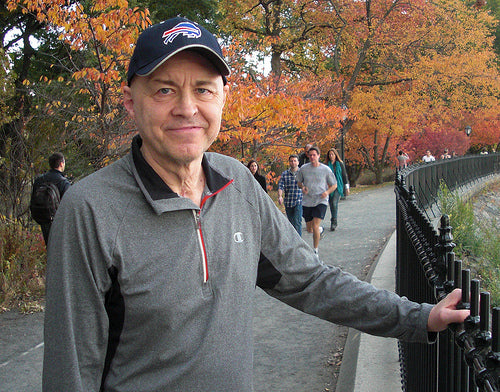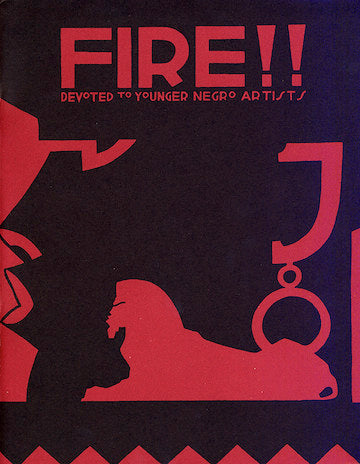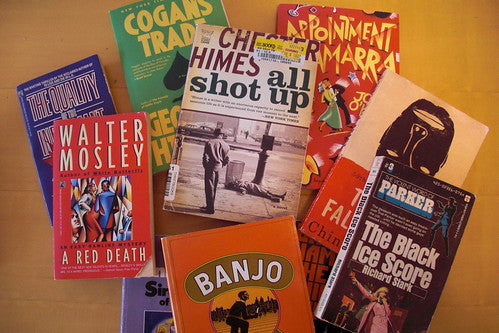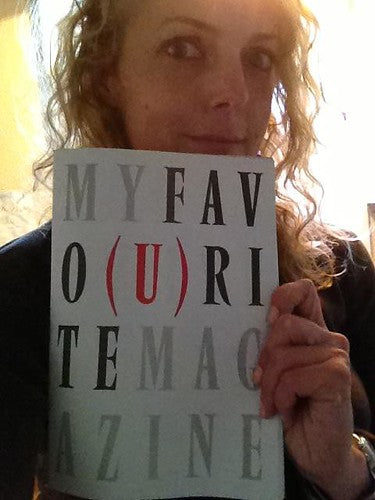
At Work With: Bob Newman, Newmanology

Bob Newman is one of the key figures of contemporary US editorial design. Not only a prolific creative director – Details, Fortune, Real Simple, Entertainment Weekly and New York are just a few of the magazines on his resumé – his generosity of spirit has been a huge influence on the industry, latterly via blogging and tweeting as Newmanology. Earlier this year he suffered a serious accident that left him unable to work, since when he has been going through the slow process of rehabilitation. Here he looks ahead at his week and shares his thoughts as his Newmanology presence re-emerges online.
Where are you today?
I’m at my apartment on 97th Street on the Upper West Side of Manhattan. I just got back from taking my daughters to school and my daily physical therapy walk around the Central Park Reservoir. Before my accident I was doing all my consulting work out of the apartment; I have a little workspace stuck in a corner by the window. Now it’s the headquarters for my rehab and recovery, as well as remaining the central command for all the Newmanology online and social media activities. Central Park is a block away, and there’s a fitness center on the top floor of my building where I can work on restoring my strength and endurance.

What can you see from the window?
There’s an urban rooftop park, complete with indoor swimming pool and lounge chairs on top of a Whole Foods store. Beyond are the new luxury high-rise apartments that have transformed the neighborhood, plus the Frederick Douglass House projects. There’s a series of new stores that have turned this section of Columbus Avenue into an urban mall, complete with broad sidewalks filled with strolling shoppers and sightseers.
I love living in this part of the Upper West Side. It’s probably the most diverse neighborhood in the United States, with a vibrant and active mix of all kinds of people, ethnicities, religions, ages, and economic groups. And, as you would expect from such a mix, it’s very progressive politically. When I got out of the hospital in June, one of my tasks was to do a lot of walking. I started out slowly by wandering around this area, as well as nearby neighborhoods like Manhattan Valley, Morningside, and Harlem. There are a lot of senior citizens and disabled people in the neighborhood, so I fit right in while I was walking with the aid of a walker and later a cane.
How many emails are waiting in your inbox?
Only about 30. One of the advantages of being at home most of the time is that I’ve finally been able to catch up on my emails. Also, I get a lot of my communications through messages on Facebook and Twitter that can be answered in just a line or two. I was in the hospital earlier this year and got a huge amount of emails; I’m still working at replying to all the kind notes and messages of support that people sent to me. I’ve also been re-learning the art of note writing. I’ve slowly been sending out thank you cards to all the many people who have sent me books, CDs, graphic goodies, and many other types of support.

What’s your favo(u)rite magazine this morning?
I just got a printed replica of Fire!! magazine, from the Schomburg Library on 135th Street. Fire!! was published in 1926 during the height of the Harlem Renaissance by a genius cluster of people that included Langston Hughes, Zora Neal Hurston, Aaron Douglas, and Wallace Thurman, among others. It’s subtitled “Devoted to Younger Negro Artists,” and to my mind is a candidate for the greatest single issue of any magazine ever published. It featured poetry, essays, fiction, and a play, as well as an amazing cover by Aaron Douglas. Due in large part to a provocative gay story by Richard Bruce Nugent, Fire!! was heavily criticized by the African-American establishment media of the time. It reminds me a lot of the indie magazines that are being promoted on magCulture, with its simple design, dedication to writing, and big, bold visuals.
I’m enjoying watching the transformation that Wyatt Mitchell is doing at The New Yorker. They continue to have great illustrated covers, thanks to cover art director Francoise Mouly, and illustration editor Chris Curry has made sure that it remains the ultimate showcase for interior illustrations. When I was in the hospital I had to stay in bed for up to 23 hours a day. I couldn’t watch TV because my brain was still so rattled, and I couldn’t focus on books because I would lose my place, so each day I would read through a complete issue of The New Yorker, from front to back, including all the little listings and even the publishing information at the bottom of the last page. I read slowly, and it would take me half the day to finish one issue, but I was so grateful for the distraction. Plus I realized again how each and every inch and word and illustration of that magazine is so carefully crafted.

Of course I’m always looking at the latest copies of Fast Company, Vanity Fair, and New York. I haven’t been buying a lot of magazines since my accident, but I’ve been lucky enough to get care packages from friends. The one magazine I can’t seem to live without is the British music magazine Mojo. I love the way the design is reminiscent of vintage LP covers and posters, and as I read it I’m constantly jotting down names of artists and albums to go check out later on Spotify. When I was still in rehab my first trip outside the building was hobbling along with my walker to the magazine store at the corner to buy the latest issue of Mojo. I think Black Sabbath were on the cover.
Has your approach to looking at magazines changed during your period away from making them?
Just before my accident I worked on an app prototype for AARP with my design partner Linda Rubes. It was a new publication, not tied to an existing magazine. I still find creating unique free-standing magazine apps the most exciting process. After the prototype was approved AARP decided to convert it into a print magazine instead of making an app. I watched designers Linda Rubes and Don Morris take what was a fluid, dynamic set of digital page formats and turn it into a print product. Suddenly all the problems that we’re used to facing with print magazines returned: too much text for too little space, integrating sidebars and points of entry, worrying about ad face-ups, etc. An exciting and vibrant publication suddenly became heavy and dutiful, not because of the designers, who did an outstanding job, but because of the print format they were working in.
I find these days that I have less patience for the packed, over-designed, frenetic style of magazines that so many folks are producing. It takes too much energy for me to dig through all those hyper pages. I’m drawn to simpler designs that stress text and large imagery. That’s one reason I enjoy so many of the indie magazines like Port, Uppercase, and Lucky Peach. I really enjoy the cool simplicity of Real Simple and The New York Times Magazine, and I wish more people followed that style.

I drifted away from iPad app magazines while I was in the hospital and rehab, and I’m just getting back into them. I like the ones that are text-based, like The New Yorker, The Atlantic, and the 29th Street Publishing publications. They’re a joy to read on the iPad. The new Letter to Jane app (above) is amazing, and I’m looking forward to seeing what 29th Street has done with the Harper’s app.
Which form of media has been most useful, comforting and helpful to you during your rehabilitation?
Well, certainly Spotify has been great for listening to all kinds of music, both new and old. My friend Norman B, who is a DJ and the host of the Life Elsewhere show on WMNF in Tampa, sent me a series of music mixes that have given me a lot of audio joy and have been good soundtracks for walking and physical exercise. And I’ve been reading through piles of vintage paperbacks dug up from my own archives and sent to me by friends.

The authors I’ve been reading most are Walter Mosley, Chinua Achebe, George V. Higgins, Chester Himes, and Langston Hughes. I’ve gotten well acquainted with the New York City public library system. They have a wonderful online ordering catalogue for books and DVDs, and that’s given me an endless stream of (free) reading and viewing. I’ve been out to some movies in the theater since getting out of rehab; mostly vintage kids’ movies at Lincoln Center, but I did see the new Wong Kar-wai movie The Grandmaster and was thrilled by it.

When I was in the hospital, the only device I had access to was my phone, and since being out I’ve been doing a lot of traveling by bus and subway to various doctors, therapy appointments, and hospital tests. My phone has been my trusty connection to all things related to media, especially reading. I’ve never spent so much time reading on a mobile device, and I have a much greater affinity now for apps and websites that are mobile-friendly. Those that aren’t force me to do a lot of scrolling and pinch-and-zooming, and it’s too much work.
The magazine apps that are designed well for phones, like The New Yorker and the 29th Street Publishing publications, are just a joy to read and interact with. I ran into ESPN The Magazine creative director John Korpics a couple weeks ago, and he told me that his job these days is all about creating and updating for mobile. I feel pretty clueless myself about the process of doing that, but my own personal experience these days makes me feel that this is the essential direction for publishing.

You’ve been collecting images of people with their copy of My Favo(u)rite Magazine. How far away from its London origins was the most-travelled copy?
The farthest-away photographed copy of My Favo(u)rite Magazine was from Porto Alegre, Brazil, via Claudio Franco of the NASCAPAS cover website (pictured above, 6,426 miles for those counting). We’ve also gotten images of My Favo(u)rite Magazine from Helsinki, Madrid, Barcelona, Milan, Edinburgh, Toronto, Tokyo, Los Angeles, Seattle, Atlanta, Amsterdam, Hamburg, Oakland, and of course London and New York City and many other places. The magazine has been photographed in the offices of The New Yorker, The Economist, Billboard, Huffington Post, Conde Nast Traveller (UK), Faber & Faber Books, Metropoli, Fast Company, and ESPN. I’m hoping we’ll get more photos from Africa, Asia, the Pacific Islands, and the Caribbean islands! (see more of the images here).

The process of taking and collecting snapshots has been amazing. It started with the illustrator Brook Meinhardt (above), who lives on Orcas Island in Puget Sound between Seattle and Vancouver. She posted hers on my Facebook page, and it took off from there. We’ve gotten them from babies, 90-year-old friends of my mom’s, dogs and cats, and everyone in-between. And there are people like the illustrator and art director Neil Gower who took his copy all over London, photographing it in the British Museum and in various offices and studios.
Obviously the My Favo(u)rite Magazine project is important to me personally because it’s raising a significant amount of medical and living expenses funding for myself and my family. Of course I’m very grateful for that. But in addition, the process of collecting the photographs and promoting the project has been great therapy for me. It helped me get back into online posting and communicating, something that my doctors kept stressing was essential to my recovery (I’m sure Jeremy you and other folks want to find those doctors who insist that online activity is essential to your continued health!).
Also, it’s been exciting to see My Favo(u)rite Magazine connect and build a worldwide network of magazine makers of all kinds. This could only have happened through the influence and respect that you and Andrew have built up among your peers in the industry. I hope that we can continue to get and share pictures from My Favo(u)rite Magazine, and again I want to thank everyone involved for making such a significant contribution to my recovery.

What was the last thing your editor said to you?
“We’re making cutbacks at the company and we’re going to have to let you go.” That was at Reader’s Digest in August 2012. I haven’t had a regular editor to report to since then. At the time I wasn’t too worried, because I was given a healthy severance package. Then a few months later the company went into bankruptcy and the severance was wiped out. A couple weeks after that I was vacationing in Florida and fell and hit my head and ended up in the hospital for three months. It was a bad run of luck, but now that I’m on my way to full recovery I feel blessed for the love of my family and friends (especially my daughters Lillian and Ivy, above), and for the community that has pulled together behind me and send along so much support of every kind. All my doctors have told me that I’m lucky to even be alive, and I’ve taken that to heart every day.
What are you most looking forward to this week?
Spending time with daughters. Wednesday morning is parents’ visiting day at school. I’m also really looking forward to the opening on Friday night of painter Andrea Arroyo’s show. It’s at the Malcolm X and Dr. Betty Shabazz Memorial and Educational Center on Broadway in Manhattan. That’s the site of the Audubon Ballroom, where Malcolm X was assassinated in 1965. The Center opened a few years ago and I’ve always wanted to visit. It’ll be the first art event I’ve attended since my accident and I’m very excited (and Andrea’s work is beautiful and inspiring).

What are you least looking forward to this week?
Four doctor appointments! I’m still getting tested and probed and poked every week.
This is probably a good place to mention that in the United States we’re in the middle of a huge, ongoing political battle over the future of the national healthcare system and how people are insured. After being in hospitals and rehab and recovery for eight months, and dealing almost daily with insurance companies, this is something that is at the top of my mind. Healthcare in the States is grossly overpriced, and is available only to those with good insurance or lots of money. Fortunately I fell into the former category. My medical bills have totalled almost $1.5 million since March (that’s not a typo!). Much of that was covered by insurance, but not all. And there is care that I haven’t been able to get because it wasn’t covered.
Meanwhile, tens of millions of Americans have no insurance at all, mainly because they can’t afford it. If I hadn’t had a good insurance plan I would probably be dead or disabled. Those without insurance are not so fortunate. The battle over Obamacare is between those who think it’s in the best interests of our country to have all citizens provided with health insurance (as well as a sense of caring and compassion), and those who believe in the current every-person-for-themselves system, which leaves a huge portion of the population unable to receive necessary healthcare and at constant risk of financial ruin. It’s the mentality that led someone in the audience at a 2012 Republican presidential debate to yell “let ‘em die!” when the issue of expanding health insurance was discussed.
What will you be doing after this chat?
I’m still so deep into my recovery that I can’t do any real design work, but I try to spend an hour a day (at least) tweeting, updating my Newmanology Facebook and Tumblr pages, and keeping my website current. I’ve been working with the site designer Tracie Lee to expand the Newmanology brand from Facebook and Tumblr on to a unique website page. We hope to relaunch that sometime in the next month or so. I’m going to get some new My Favo(u)rite Magazine photos posted, and I have a phone meeting with some friends who have organized a fundraising page for me and are also putting together a benefit illustration auction at the Society of Illustrators early next year. I also have a slew of new magazine apps to look through.

In between I’m going to do some physical therapy exercise at the gym upstairs, and continue to work on swallowing exercises, one of the essential steps for my full recovery. The soundtrack for all that will be the new reissue of the Humble Pie Rockin’ the Fillmore recordings that my friend James Reyman sent me last week, and a playlist of 70s soul including Blue Magic, the Delfonics, Spinners, Chi-Lites, and Al Green.
www.robertnewman.com
@newmanology

You can buy your copy of My Favo(u)rite Magazine from our online shop (print or PDF) – all proceeds to Bob’s fund.
And you can donate directly to the fund here.


